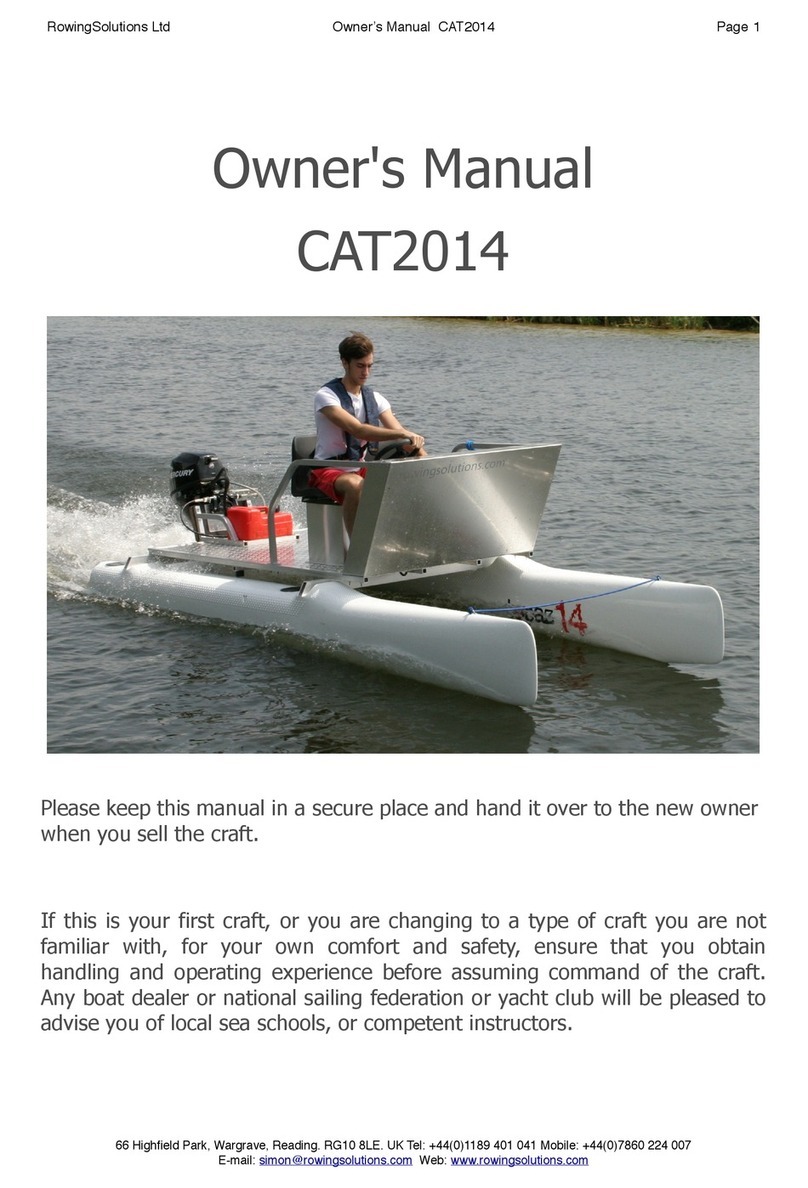
Keep a sharp lookout for people and objects in the water;
Follow the rules of the road;
Be aware of the crew/passenger's safety at all times;
Never sail when the operator is under the influence of drugs or alcohol;
All persons should wear a suitable personal floatation device (life jacket/ buoyancy aid) when on
deck. Note that, in some countries, it is a legal requirement to wear a personal floatation device that
complies with their national regulations.
Any craft, no matter how strong it may be, can be severely damaged if not used properly. Inspect the
craft regularly especially after any kind of suspected damage. Always adjust the speed and direction
of the craft to sea conditions.
Reduce speed when there is limited visibility, rough water, people in the water
nearby, boats, or structures;
If your craft is fitted with a liferaft, carefully read its operating manual. The craft should have onboard
the appropriate safety equipment (lifejackets, harnesses, etc.) according to the type of craft, weather
conditions, etc. This equipment is mandatory in some countries. The crew should be familiar with the
use of all safety equipment and emergency manoeuvring (man overboard recovery, towing, etc.).
Sailing schools and clubs regularly organize training sessions.
In some countries, a driving licence or authorization is required, or specific regulations are in force
and carriage requirements may be subject to local regulations.
Always maintain your craft properly and take into account the deterioration that
will occur over time and as a result of heavy use or misuse of the craft.
Ensure that the anticipated wind and sea conditions will correspond to the design
category of your boat and that you and your crew are able to handle the boat in
these conditions;
It is the boat owner/operator's responsibility to:
Always use trained and competent people for maintenance, repair or modifications. Modifications
that may affect the safety characteristics of the craft shall be assessed, executed and documented
by competent people. The boat builder cannot be held responsible for modifications that boat builder
has not approved.
Know the limitations of your boat;




























